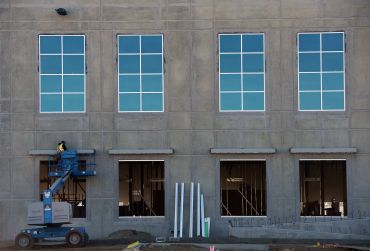
New York has been living beyond its means for decades. The fiscal irresponsibility exhibited by the state has put us in a $9 billion hole, and there are no easy solutions to this fiscal disaster.
Typically, budget gaps are plugged with a combination of spending cuts, tax increases and borrowing. The time has come, however, for our legislators to make the tough decisions that they all claimed to be able to make when they were running for office. Many of New York’s elected officials agree that raising taxes, which would increase what is already the highest tax burden in the U.S., is not feasible. Borrowing more money, which has been proposed as part of the Ravitch plan, would only add to our problems, as New Yorkers already pay $5.7 billion per year in debt service out of a $132 billion budget. Without any new borrowing, it is expected that taxpayers will be paying $7.7 billion a year by 2014 to service our existing debt. It is time to make tangible and painful spending cuts.
This year’s $9 billion shortfall is just the tip of a projected $60 billion deficit iceberg over the next five years. How did we get here? Governor Paterson stated at a press conference recently that a plan must be formulated to enforce a relationship between spending and revenue, “just like you would do in your own household.” It is painfully apparent that this pragmatic mind-set was not part of the process in formulating last year’s budget, which was one of the biggest acts of irresponsibility in the history of the state.
Last year, with almost all families and businesses struggling to cope with the impact of the worst recession since the Great Depression, personal and corporate budgets were slashed, in accordance with our new economic realities. It was perfectly clear that incomes and revenues would be down; therefore, reductions in operating budgets were necessary. In a rational world, expenses are adjusted to the point where the dollars you expect to have meet your obligations. Residents and businesses here applied this simple rule in order to make ends meet. While this process is painful and no one enjoys facing it, few of us had a choice. It’s called fiscal responsibility. New York legislators didn’t see it that way.
Last year, the Legislature passed a $131.8 billion budget, an increase of 10.1 percent, or $12.1 billion over the prior budget. State officials maintained that the growth in expenditures was the result of spending economic stimulus funds received from the federal government. Unfortunately for state officials, we were paying attention in first grade and know how to count. Excluding the federal stimulus funds, state spending increased by 4.7 percent, or $5.9 billion. This increase was approved at a time when it was clear revenue would be decreasing greatly and was larger than the rate of inflation by a wide margin. While local residents and businesses were cutting expenses, our state was greatly increasing them.
In order to address the deficits created by this irresponsibility, last year’s budget included 137 new taxes, fees and charges that New Yorkers didn’t have to pay before-137! (Far be it for our elected officials to let New York slip from the coveted position of having the country’s highest tax burden.) These new taxes addressed plugging 80 percent of the projected budget gap at that time; genuine spending cuts accounted for only 20 percent.
At the time that last year’s budget was passed, many believed that New York State’s economy would be much worse off in the future due to these spending increases. They occurred nonetheless. Clearly, the federal stimulus money was a non-recurring event. Using the stimulus money to create additional spending not only delayed the making of tough decisions, but now makes those decisions more difficult, as the billions of dollars of additional spending, created by stimulus money, has to be cut simply to get back to pre-stimulus levels. Moreover, there were significant flaws in last year’s budget, as it was based on overly optimistic revenue assumptions and temporary fixes that pushed the problems into the future.
Unfortunately, the future is now.
LIEUTENANT GOVERNOR RICHARD Ravitch was appointed to devise a plan to address the growing budget dilemma. Mr. Ravitch is credited with being a major architect of the plan that helped New York escape near-bankruptcy conditions in the mid-1970s. His task is not an enviable one today. To solve our fiscal problems, we must deal not only with a 2009 budget that was a disaster, but with decades of irresponsible behavior.


